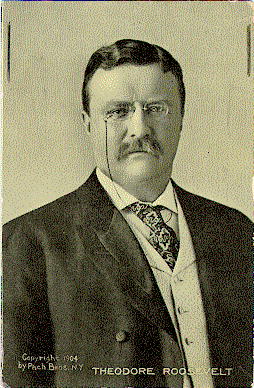Volume 37, Number 2 Fall 1997
"The Otherness of Things"
John G. Neihardt's Branson Saga
by Dr. Patsy Watts
 What drew poetic
visionary John Gneisenau Neihardt and his cosmopolitan wife Mona (Martinsen)
-- former student of Auguste Rodin -- to the Missouri Ozarks? Leaving the beaten
Highway-76 trail to meander along Neihardt Avenue, Banson travelers might well
ponder the question, as they imagine the Ozarks as it must have appeared in
1921, the year the Neihardts left Bancroft, Neb., to settle just outside of
Branson. The wooded hills, blue haze caressing the age-worn shapes outlined
in the distance, the mysterious hollows snaking around caves and sink holes
-- all must have enticed this young family, whose vision of poetic unity found
in the real and practical a fascinatin with the "otherness of things".
What drew poetic
visionary John Gneisenau Neihardt and his cosmopolitan wife Mona (Martinsen)
-- former student of Auguste Rodin -- to the Missouri Ozarks? Leaving the beaten
Highway-76 trail to meander along Neihardt Avenue, Banson travelers might well
ponder the question, as they imagine the Ozarks as it must have appeared in
1921, the year the Neihardts left Bancroft, Neb., to settle just outside of
Branson. The wooded hills, blue haze caressing the age-worn shapes outlined
in the distance, the mysterious hollows snaking around caves and sink holes
-- all must have enticed this young family, whose vision of poetic unity found
in the real and practical a fascinatin with the "otherness of things".
Most readers first sample Neihardt through his collaboration in Black Elk Speaks, researched and published while the Neihardt family was living in Branson. The Oglala Sioux tribal history and "as-told-through" autobiography of the Lakota Holy Man, Nicholas Black Elk, fuses oral and literary tradition in what has been called both a Native American bible and the Rosetta Stone of the 19th century Native American culture: Through the unfolding of Black Elk's prophetic vision, the work records selected events of Oglala history through the Messiah Movement of the 1880s and the Wounded Knee massacre in 1890.
Following its 1932 publication, Black Elk Speaks attracted only a selective readership for the next thirty years. A resurgent interest in Native Americanstudies in the 1960s led to the book's being republished in 1961 and 1979. Vine Deloria, Jr.'s introduction to the 1979 edition praises the work as one of the greatest religious classics of the 20th century. Some readers, including many Native Americans, look to it, as Deloria puts it, "for spiritual guidance, for sociological identity, for political insight, and for affirmation of the continuing substance of Indian tribal life" (xiii). Many are drawn to the work not as a way to avoid the broken shards of contemporary society, but for a vision of a whole vessel whic must transcend the preoccupations of individual cultures.
Certainly, Neihardt's efforts in making Black Elk Speaks accessible deserves critical acclaim, but the poet's accomplishments have a much larger scope: Selectively extracted from his 3,027 known poems, closet-dramas, stories, articles, and reviews -- from his earliets publication to his two-part autobiography All is But a Beginning (1972) and Patterns and Coincidences (published posthumously in 1978) -- Neihardt's best works are characterized by a desire for poetic unity and a search for the heroic.
[3]
This volume: Next Article | Table of Contents | Other Issues
Other Volumes | Keyword Search | White River Valley Quarterly Home | Local History Home
Copyright © White River Valley Historical Quarterly

